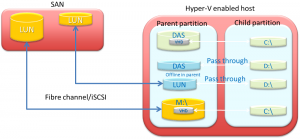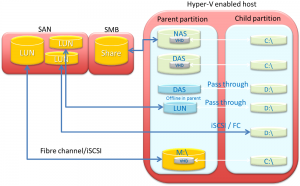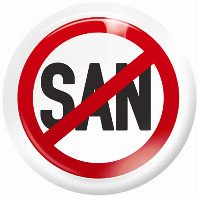 Reading Time: 3 minutes
Reading Time: 3 minutesOn last Wednesday I’ve got a meeting with some Nexenta people: Jim Ash (VP of Sales) and Jim Fitzgerald (VP of Business Development & Alliances). I’ve already meet some Nexenta guys at the last Open Storage Summit EMEA 2012 and this was the occasion to know more about their company and products.
About the company, Q3 2012 was their best quarter and the grow is more people, more customers (some also with 100 PB) and more offices also in Europe (Netherland, UK, Germany and now also in Italy, at Milan).
About the products they are an example that perfectly fit in the Software Defined Storage, because their products are just software based (you can choose which hardware you prefer, if is in HCL, or the VA approach) and the storage part is build around the ZFS.
Around the storage products they have also build a product specific for the VDI: NexentaVSA for View (or N4V). I’ve already write some posts about it (Introduction, Architecture, Deployment, Usage).
Actually this product is official, but the number of customers is actually small (but growing)
More interesting, and announced on Tuesday 9 October, is the new partnership with Cisco (started some months ago) to join the VMware Rapid Desktop Program with a scalable and high performance solution for the VDI.
This combined Nexenta and Cisco solution can scale without limits. Customers can start small with a proof of concept with as few as 50 seats, and then scale to support thousands of desktops within the same architecture and with a similar per-unit desktop cost. NexentaVSA for VMware View currently lists at $35 per concurrent desktop, which includes unlimited local storage and 16 TB of external storage for VDI workloads.
Jim Fitzgerald has describe the solution that is based on N4V and USC B230 (on the virtualization part) with UCS C240 for the NAS part (the entire solutions is completely based on Cisco servers and switches on the hardware part).
Each blade has two SSD (to increase the performance) and the NAS with also the option of two NAS to implement a persistent configuration for the storage (for more information see Storage for VDI: local or shared?). The solution can scale up to 1600 users per chassis with more than > 70 IOPS per user (75% writes)!
There is also a small solution (for less than 150 users) based con a C240, designed specifically for SMB or ROBO cases.
The entire solution is sold by Cisco with their SKU. Cost per per seat is estimated around $470 (for the persistent implementation with NAS in HA) or $429 (for non persistent) that included both the hardware part (storage and servers) and the software part.
For more information see the Solution Brief.
Nexenta has announced also another partnership, still for the VDI field, with ClearCube Technology, a company specializes in creating innovative centralized computing and desktop virtualization solutions, especially Zero client products.
Finally we have spoke about the porting to other hypervisors (like Hyper-V) or platforms (like XenDesktop). This could be possible in the future, but they are actually focused on the existing products and want to improve them before move to other solutions.
And about their thought about the VMware moves in the Software Defined Storage (SDS) area, with VSA, but also with the announce of a more scalable solution, the reply was simple: Nexenta is working on it from several years, their solution is already a SDS and they have some years of advantages on it. Also the competition could be a good thing to improve each others.













